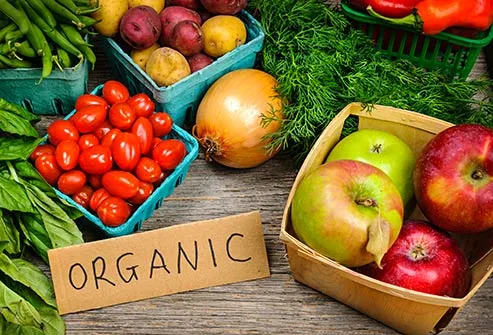Sunday, March 25, 2018
IS IT ORGANIC ?
In the past few years I have noticed that the major food retailers that I patronize have increased their product line to include a remarkable amount of organic food. Being naturally suspicious of the organic industry and knowing how difficult it is to grow quality and quantity in organic food I have wondered how this dramatic increase in supply can be. Although the science and art of growing organic is on a fast track, actually producing the volume of products that have the same visual appeal of non organic food seem ahead of it's time. Are these products US grown? I question the labeling of US grown products, so I would never consider any foreign country label as being anything other than being fake with the intent to capitalize on the inflated price supported by a gullible consumer. Although my goal is reduce or eliminate commercial inputs on our operation, I don't see how this can be developed in any significant scale for many years to come. Organic sources of crop nutrients and the current need of labor are two giant obstacles. Until we rebuild our degraded soils to the point they are self sustaining, any thought of producing massive volumes of organic produce is a pipe dream, other than for Yuppies and the well healed that live on ideology more than practicality. Those would be the ones that believe in celery labeled as "gluten free". I recently came upon an article from an organic oriented organization that I think is a partial answer to my question. The link to that article is ---> Problem with organic designation > .
Monday, March 5, 2018
2017 HARVEST UPDATE
The 2017 crop year was a record breaker. Never in my lifetime have we received 20.4" of rain/snow in a crop year at our SJ/Ewan operation. Also, we have had near record or record breaking temperatures for the 2017 crop year. That sounds like it should be a banner year with plenty of moisture and heat. Well, not for us. Timing of the rain and heat trumped everything. The harvest of 2017 was mostly disappointing.
WINTER WHEAT: (Brundage 96) All of our winter wheat was seeded on pea ground (no ww on fallow ground). The ground was dry, which meant we didn't consider seeding until after Oct. 1st, --a bad decision this year. October was extremely wet all month. Lesson learned?! --Seed in September regardless of dryness, and seed it deep (1.5-2") so it takes a significant rain to start it. Had we done that, the Thornton winter wheat crop would have probably been 100-110% of average, and the less forgiving SJ/Ewan area winter wheat crop would have been in the range of 90-100% of average. As it was, Thornton was ~90% of average, and SJ/Ewan was ~50% of average.
SPRING WHEAT (DNS): (Glee) The season started out with great soil moisture, and timely seeding, that developed into a very nice looking stand of spring wheat. The unusual heat wave (~ three weeks ± 100 degrees) damaged the bloom and seed development. Our quality was remarkably good, --the meshes were just blanked out. Test weight was good and shriveled kernels were few, and protein was just under 14%. Our yield was ~ 90% of average.
[Update 6/28/18] --Meetings held during the winter and spring on Canola have emphasized the importance of proper timing for chemical applications. There will be a yield loss to the crop if chemical is applied after bolting commences. We didn't get to the in-crop application until bolting started showing, along with some flowering, --this is probably why we were ~200#/a below a neighbors yield although we had a better stand and population. The neighbors field was a couple of hundred feet higher, and that may have been a factor as well in terms of heat effect.
SPRING CANOLA: (hyCLASS 930 rr) The crop was timely seeded. The plant population was good. The crop was growing well, but the heat hit in early bloom (for 2016 trials, we had nearly a month of bloom). The high heat over the extended time did not let a re-bloom establish pods. In fact the spring canola continued to bloom through the beginning of 2018, although no pods set. The yield was ~ 30-40% of what we expected. Any other field would have probably done better this particular year. This field was our poorest soil, lowest elevation and all faced S and SW. It took the brunt of the heat. We are not deterred. We think that spring canola is going to be a great alternative to winter wheat. Also, it appears that we will be able to cut spring canola with the stripper header which is a big plus. This field went into winter in great shape, --good residue, standing tall with most of the plants still living. The tall canola stubble, although not thick like wheat stubble, is great for reducing wind velocity near the soil surface, and snow catch. Winter of 2017-2018 was not a big snow year like 2016 but we haven't seen any drifting in that field compared to mowed or tilled fields.
I haven't sorted out the data for any comparison between CF/winter wheat and CC/winter wheat, or our canola on ground that has had a cover crop and ground that has never had a cover crop. I may include that as an update to this post or it may take a post of it's own.
Labels:
CrossSlot,
harvest,
moisture,
seeding,
stripper head,
Year's Summary
Subscribe to:
Comments (Atom)

